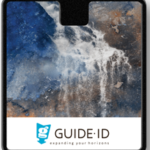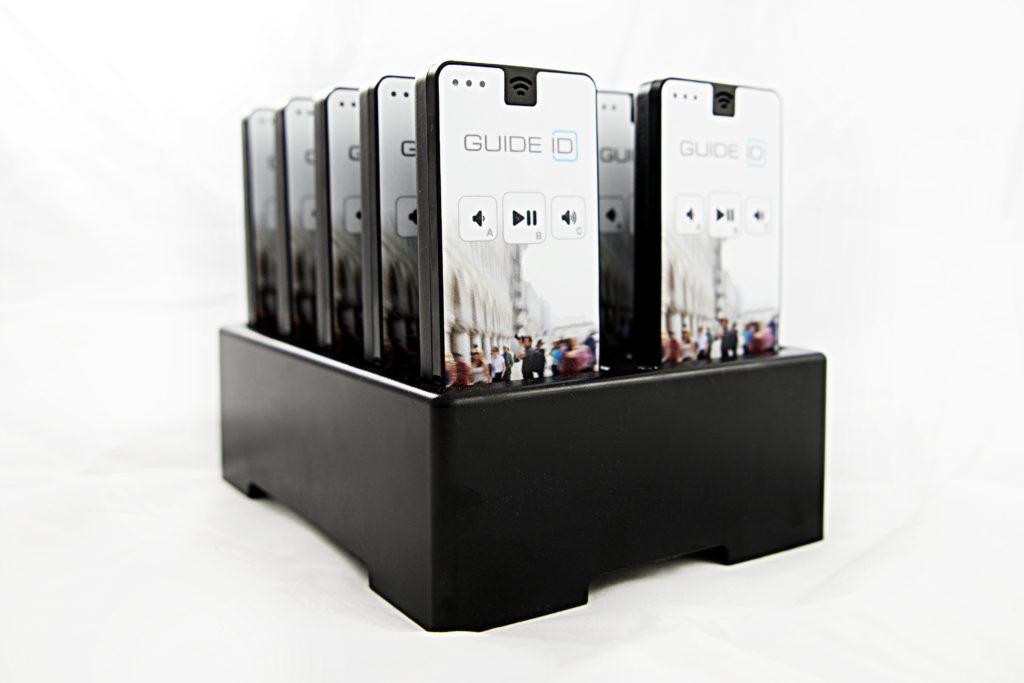The Podcatcher is Guide ID’s audio device. It’s designed to be simple to use and sturdy enough to last a while. This page intends to detail what it can do and how the most common activities the Podcatcher can perform, work.
Essential features
IR receiver:
While concealed, the infrared receiver is located at the very tip at the top of the device – like a TV remote.
Speaker:
The speaker is located at the top of the front of the device – like a phone.
Storage:
The Podcatcher stores its content, firmware and log files on an SD card inside the casing.
These three things, in essence, enable the Podcatcher to play the audio it needs to. The circuit board handles things like playing MP3s and finding the correct content to play.
Buttons:
The basic Podcatcher has three buttons:
- The left button acts both as a ‘volume down’ button when playing regular audio clips, and as ‘option A’ when in a Clip that has A/B/C options.
- The middle button acts both as a ‘pause/play’ button and as ‘option B’.
- The right button acts both as ‘volume up’ and as ‘option C’.
With just these buttons, you can create not just informative experiences, but also quizzes, surveys and more.
Visitor usage
At the most basic level, all a visitor needs to do is use the Podcatcher as a hybrid between a TV remote (pointing at IDentifiers) and a phone (listening to it). The typical visitor experience looks something like this:
- Receive a Podcatcher, either from a handout point or from self-service.
- Point the Podcatcher at a Start IDentifier with the desired language (read more on those, here).
- Experience the museum with the added benefit of having a mind-blowing audio tour.
- (optional) Register the Podcatcher with MapMyVisit so the visitor can look at the tour again at home.
- Return the Podcatcher to the museum.
As you can see, super simple stuff.
Syncing (charging battery & updating content)
Podcatchers have to be recharged periodically. This is done, along with installing any new software for the player and receiving new audio files that have been published, by putting them into a docking station connected to a computer with the Podcatcher Sync software – a sync console. By default, the sync console will attempt to synchronize files daily at 19:00 (7 PM) local time.
To sync a Podcatcher, it has to be placed in a Docking station connected to a working Sync Console first. Then you can either:
- Wait for the daily sync to happen;
- Schedule a sync in the Podcatcher Portal;
- Click ‘Sync Now’ in the Podcatcher Sync application to start a sync directly
Podcatcher settings
The Podcatcher has a handful of settings you can tweak to suit your needs, most notably settings related to speaker volume. Refer to this article for information.
Specsheet
For an overview of the features and measurements of the Podcatcher, please take a look at the Specsheet of the Podcatcher.



 Start IDentifiers
Start IDentifiers
